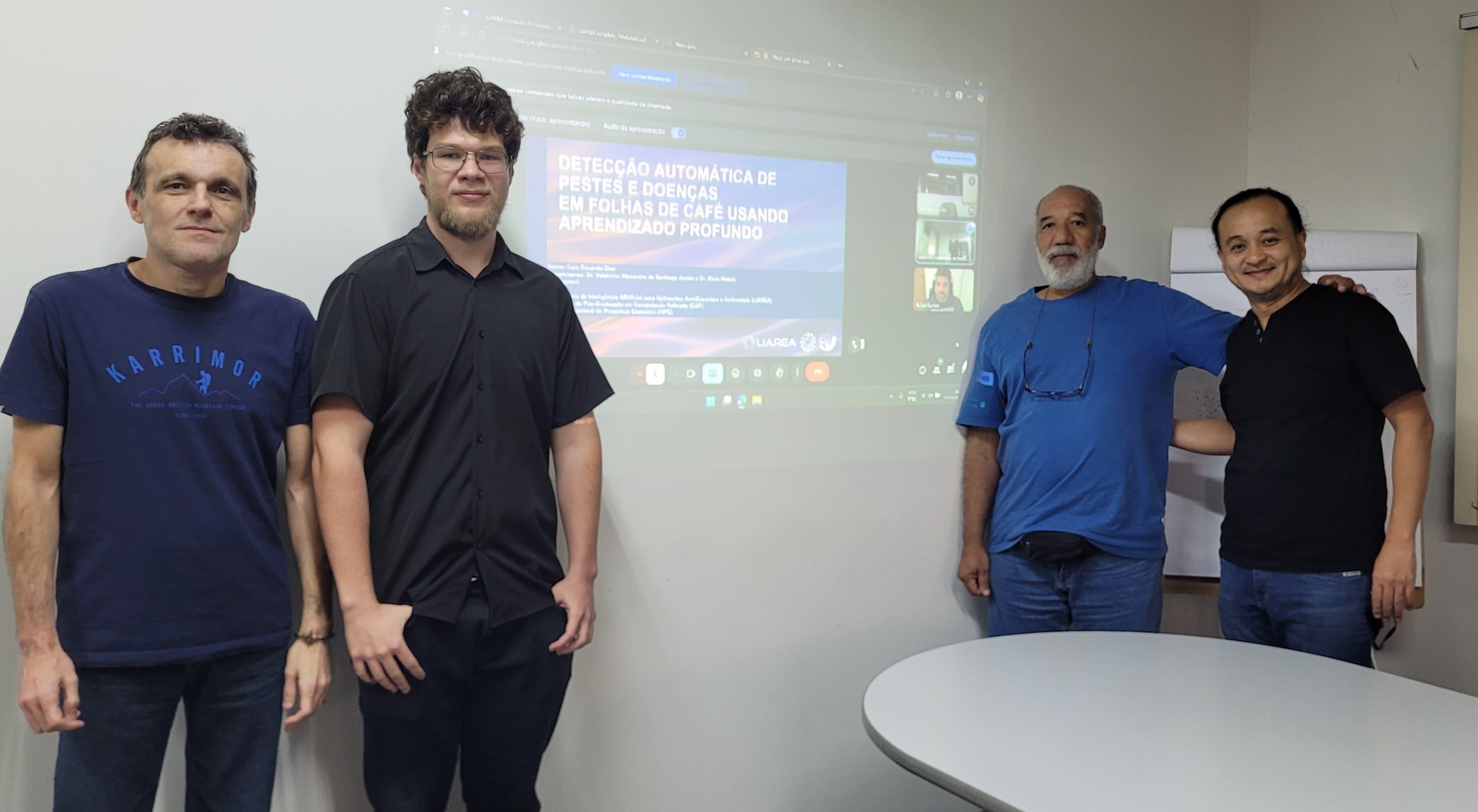Caio Dias, a graduate student representing INPE, successfully presented his master's proposal titled "Automatic Detection of Pests and Diseases in Coffee Leaves Using Deep Learning." The presentation addressed the challenges faced by coffee farming in Brazil, particularly related to diseases and pests that compromise crop productivity.
Coffee farming is of great relevance to the Brazilian economy; however, it faces significant challenges, especially due to diseases and pests. Detecting these problems is often done visually by specialists or the farmers themselves. The symptoms manifested on the leaves can be quite similar among different diseases and pests, making accurate diagnosis difficult. While there are scientific studies using deep learning (DL) in the context of coffee plantations, there is still a lack of robust evidence on which techniques are most appropriate, particularly when dealing with field images and not just those collected in controlled environments.

From left to right: Dr. Valdivino, Caio, Dr. Rafael, Dr. Sidnei, and Dr. Elcio
This master's dissertation aims to contribute to the automatic detection of pests and diseases in coffee leaves through DL. The research began with an investigation into various DL models for object detection, using existing databases to assess the performance of these models. As part of the proposed methodology, a new database was developed, called Images of Coffee Leaves Affected by Diseases and Pests (ICLADP), which includes five classes: four representing diseases (cercospora, rust, aureolate spot, and phoma) and one representing a pest (leaf miner). The experiments already conducted will be repeated using this field dataset to evaluate the models' performance under real-world conditions.
Additionally, the best-performing DL models will be embedded into mobile phones to create an application aimed at assisting farmers. The application will be tested by acquiring new images through a mobile phone. Initial experimental results showed that the YoloV10-Nano model outperformed the others, demonstrating a good balance between accuracy (achieving 0.332 mAP@50) and computational efficiency, with the lowest latency of 8 milliseconds.
The defense was chaired by Sidnei Santanna, with the guidance of Rafael Santos, Valdivino de Santiago, and Elcio Shiguemori. The panel's feedback and suggestions greatly contributed to the success of the defense.

